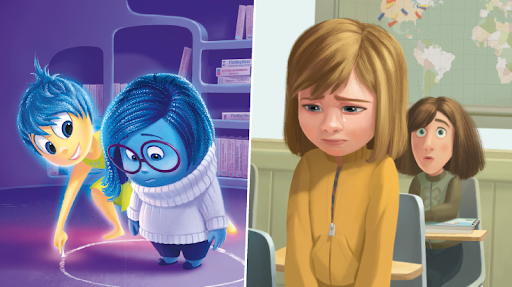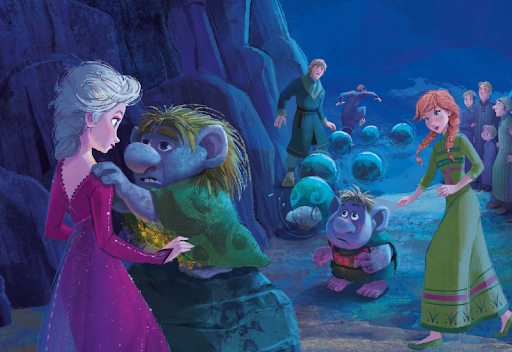Growing up is an exciting time. Children are curious, open-minded and every day welcomes a new thing to learn. They are constantly exploring and discovering themselves and the world around them; but children also have to face many challenging times too as they get older. It is, therefore, important that we teach our young people to be aware of their own wellbeing and self-care. What they can do to lead a balanced and healthy life, and give them the tools that they need to help them in difficult times, both mentally and physically.
What are the key factors to a child’s wellbeing?
Have a look at Maslow’s Hierachy of Needs below. It describes people’s basic needs for good mental and physical wellbeing.

Self-actualization – children need to be aware of their own feelings and understand how to process them.
Esteem – children need to grow in confidence, feel valued and receive praise for their achievements. Having hobbies and interests too, is key.
Love/Belonging – children need to develop meaningful relationships or feel part of a community. This could be friendships, family, a class, a club or school.
Safety – children must feel safe in their surroundings.
Physiological – children must have a home, access to food, water, sleep and exercise.
However, do children know how to look after their wellbeing?
Ask them to make a list and share your ideas together as a class or as a family. What do they do to look after their mental and physical health? Are there any things that they do lots of or don’t do enough of? What can they start doing or try to do more of?
Alternatively, you could also ask them to put the following items in order of importance. Ask them, ‘What makes you happy?’, ‘What is important to you?’
-Food
-Water
-House
-School
-Friends
-Family
-Exercise
-Sleep
-Hobbies
How can Disney Kids Readers help children’s wellbeing?
Let’s refer back to the hierarchy of needs and see how they can link into reading.
Self-actualization – Disney Kids Readers can help increase empathy and self-awareness through reading about other characters’ emotions and putting ourselves in their shoes. It can help us to understand and process our own emotions too. For example, in Inside Out, we see Riley struggle with her emotions when her family moves to San Francisco. Through the characters of Joy, Sadness, Fear, Anger and Disgust, we can see how normal it is to feel a range of emotions and not feel happy all the time.

Esteem – Disney Kids Readers also help children to develop confidence and self-esteem as they progress through the levels. Through completing the wide range of activities at the end of the books, children can see that they are learning and improving their English skills as well as having fun reading a book.
The readers can also help us to navigate difficult moments in life and teach us resilience and strength in challenging times. When we read the stories, we see how the characters overcome obstacles and deal with their problems. This can teach children key lessons and help them to tackle their own problems in the real world.
For example, many of the characters go through difficult times to which children can relate. In The Jungle Book, Mowgli is scared but then his friend Baloo comes to help him. In Frozen II, Elsa goes on a difficult journey to restore justice for the people of Arendelle and The Enchanted Forest.

Love/Belonging – reading Disney Kids Readers as a class, in pairs or as a family, can really strengthen relationships and sense of belonging, which is such an important part of children’s development. Sharing a book is something special that can allow people to develop common interests and therefore make children feel that they are part of a wider community.
Safety – children can feel safe and more secure when a parent or a caregiver reads to them before bed. Disney Kids Readers are perfect bedtime stories and help children to fall asleep listening to their favorite Disney characters on exciting adventures. Also, in times of stress, reading can help reduce anxiety, allowing children to enjoy the present moment and escape the real world for a little while.
Physiological – reading exercises your brain. In addition to physical exercise, reading is an excellent mental workout which is so important to children’s health. Ask the children to memorize some pages from the reader and recite it without looking or ask them to memorize the phonics rhyme on the phonics page. You could also ask them to memorize the key words from the glossary list and see how many they remember!
Now try out some of the activities below linked to the readers which will help your children focus on their wellbeing!
- Paint a scene
This activity is a calm, relaxing and mindful activity for the children to complete. The world is a busy place and this activity links in with the idea of self-actualization and esteem. Painting or drawing keeps our mind focused on one task and reduces stress and anxiety. It can help us to process difficult emotions and can cheer us up when we are feeling down.
Need: Self-actualization and Esteem
- Reading emotion diary
Self-awareness is such a useful tool for our wellbeing – through this activity, the children take a moment each day to read a few pages of a book and then look inside themselves to think about how they are feeling before and after reading. This is powerful as over time the children will understand that reading is a good way to calm the mind and manage emotions – something that can help them improve their own wellbeing and feel safe.
Need: Self-actualization, Safety.
- Reading emotions
Emotional intelligence is such an important part of life. Understanding how someone is feeling through body language such as facial expressions, gestures and body movements can be useful when someone is sad, angry or upset. It can help us decide what they need and can help them feel listened to, loved and valued. In this activity the children practice this through analyzing the characters’ emotions. It will help children build confidence when dealing with difficult/sensitive topics with family and friends.
Need: Love/belonging and esteem.
- Guess thescenemeditation.
This activity is a great exercise for the brain. It helps children to visualize and picture different surroundings in their minds and imagine different smells, sounds and textures and bring them to life. At the same time, as the children’s minds are focused on one thing, they relax and feel calm.
Need: Physiological and Self-actualisation
- Develop resilience
In every story, there is a lesson to be learned and through this activity, the children learn how to deal with difficult situations through the characters. It teaches the children that although there are hard times in life, if we are patient, work together and show resilience, then we can work through our problems.
Need: Belonging and Esteem
- Create an exercise routine
This activity is creative and fun and will get the children moving and laughing at the same time. Physical exercise is so important to our wellbeing, so what is better than doing a workout with your favorite Disney character? The children can do these workouts in small groups, with family or as a class!
Need: Physiological
The post Fostering self-care and wellbeing through the world of reading appeared first on Resources for English Language Learners and Teachers | Pearson English.
from Resources for English Language Learners and Teachers | Pearson English https://ift.tt/3DmqT8l
via Learn Online English Speaking
Comments
Post a Comment